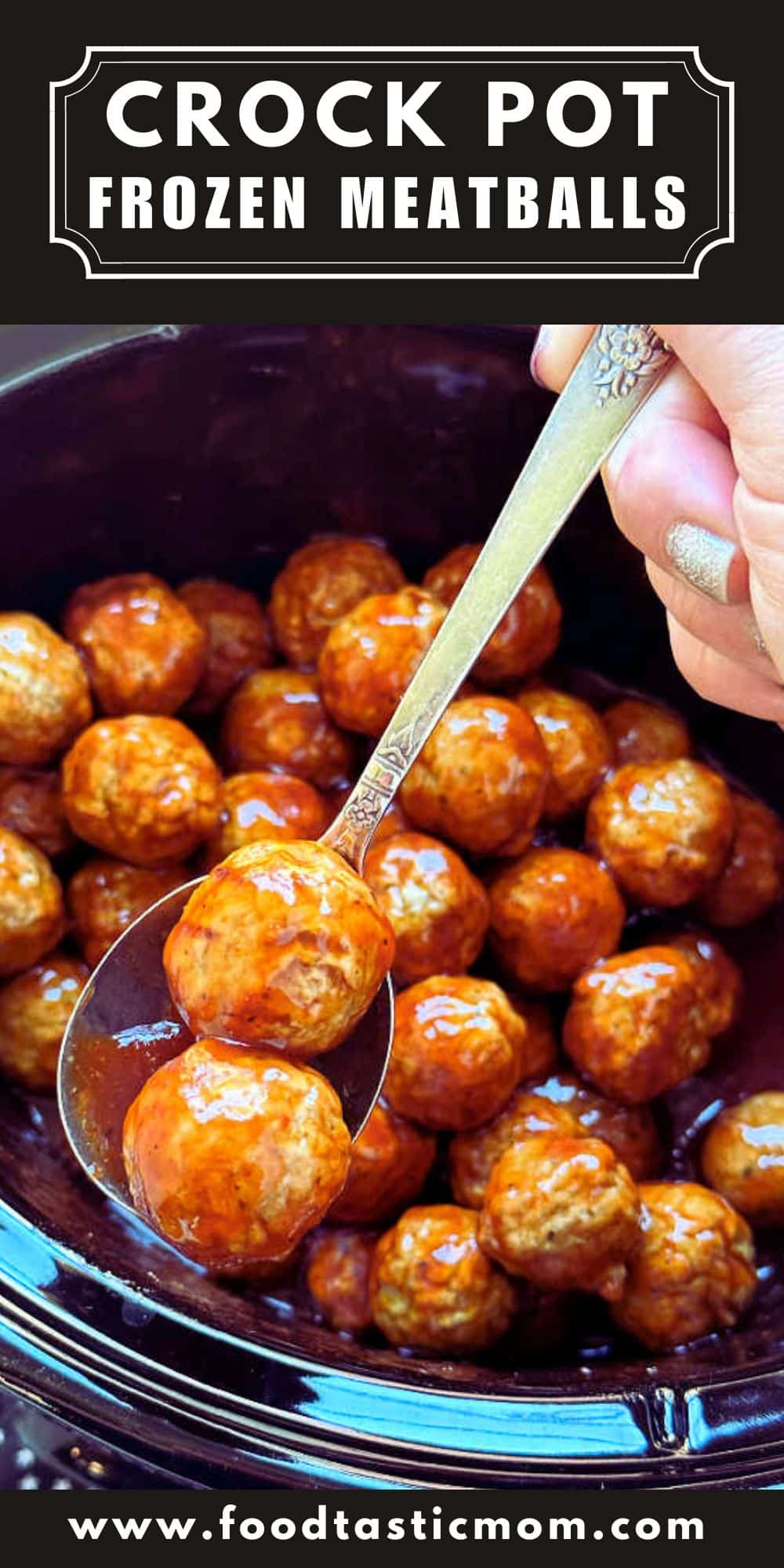Have you ever found yourself in a rush, wishing you could speed up your slow-cooked meal? The idea of putting your crockpot in the microwave might have crossed your mind.
It seems like a quick fix, right? But hold on. Before you try this, it’s crucial to understand what happens when these two kitchen appliances collide. This article will unravel the truth, helping you avoid potential disaster and ensuring your meals are deliciously safe.
Ready to discover if you can really put your crockpot in the microwave? Let’s dive in and find out!

Credit: www.foodtasticmom.com
Crockpot Materials And Microwave Compatibility
Understanding crockpot materials is crucial for microwave compatibility. Different crockpots are made from various materials. Each material has unique properties. Knowing these properties helps in determining microwave safety.
Glass Inserts In Crockpots
Some crockpots have glass inserts. Glass is generally microwave-safe. It doesn’t react with microwave radiation. However, glass can break with sudden temperature changes. Always check the manufacturer’s instructions before microwaving.
Ceramic Crockpot Liners
Ceramic liners are common in crockpots. Ceramic can handle microwaves well. It’s a great insulator and durable. But, glazed ceramics may contain lead. Always verify if the ceramic is labeled microwave-safe.
Metal Components
Metal parts are found in some crockpots. Metal is not microwave-safe. It reflects microwave radiation. This can cause sparks and fires. Avoid placing any metal parts in the microwave.
Plastic Elements
Crockpots may have plastic lids or handles. Not all plastics are microwave-safe. Some can melt or release toxins. Ensure plastic parts are labeled microwave-safe before use.
Safety Tips For Microwave Use
Follow safety guidelines for microwave use. Always consult the crockpot’s manual. Check for microwave-safe labels. Use caution to prevent damage or hazards.

Credit: www.reddit.com
Potential Hazards Of Microwaving A Crockpot
Microwaving a crockpot can lead to potential hazards, such as damaging the appliance or causing uneven heating. The materials used in crockpots are generally not microwave-safe, risking cracks or melting. Always check manufacturer guidelines before attempting unconventional cooking methods.
Microwaving a crockpot might seem like a convenient shortcut when you’re in a hurry. However, it’s essential to know the potential hazards before you proceed. A crockpot is not designed for microwave use, and doing so can lead to safety issues and damage to your kitchen equipment.
1. Material Unsuitability
Crockpots are typically made of ceramic or metal materials. These materials are generally not microwave-safe. Metal can cause sparks, while ceramics may crack or shatter under high microwave heat. Have you ever accidentally put a non-microwave-safe bowl in the microwave and heard that alarming pop?
2. Risk Of Damage To Your Microwave
Microwaving a crockpot can potentially damage your microwave. The sparks from metal components can cause short circuits. Plus, if the ceramic cracks, it might leave debris inside your microwave, leading to more issues.
3. Uneven Heating
Crockpots are designed for slow cooking, ensuring even heat distribution over time. In the microwave, the heat is uneven. This could lead to hotspots or partially cooked food, which isn’t just inconvenient—it can also be unsafe.
4. Potential For Burns Or Injury
Handling a crockpot heated in a microwave poses a risk of burns. The exterior may heat up unpredictably. Imagine grabbing what you think is a warm handle only to find it’s scalding hot. Always prioritize your safety and use equipment as intended.
5. Warranty Voiding
Using a crockpot in a microwave may void any warranty you have on the device. Manufacturers provide clear guidelines on usage, and ignoring them might leave you without support if the crockpot breaks. Are you willing to risk that over a few saved minutes? Understanding these risks can help you make informed decisions about your cooking practices. Your safety and the longevity of your kitchen appliances should always come first.
Safe Alternatives For Heating Crockpot Meals
Heating meals prepared in a crockpot can be tricky. Using the wrong method may damage your crockpot. Or even ruin your meal. Fear not, there are safe alternatives. They keep your food delicious and your crockpot intact.
Use A Stovetop
Transferring your meal to a stovetop pot is a great choice. Heat on low. Stir occasionally. This method ensures even warming.
Try An Oven
Ovens provide consistent heat. Use an oven-safe dish. Set the temperature to a low setting. Cover the dish to retain moisture. Check your food often to avoid overcooking.
Opt For A Microwave-safe Dish
Transfer your food to a microwave-safe container. Heat in short intervals. Stir between intervals to evenly warm your meal. This method is quick and efficient.
Use A Steamer Basket
A steamer basket is gentle on food. It helps retain nutrients. Place your food in the basket. Steam until thoroughly heated. Perfect for vegetables and meats.
Invest In A Hot Plate
Hot plates offer a portable solution. Ideal for small spaces. Heat your meal slowly. Adjust the temperature for perfect results. Safe and user-friendly.
Microwave Safety Tips For Kitchenware
Microwave ovens have become an essential appliance in our kitchens, offering convenience and speed. Yet, not every piece of kitchenware is microwave-friendly. Ensuring that your crockpot or any other cookware is safe to use in the microwave can prevent mishaps and extend the life of your kitchen tools. Let’s delve into some crucial microwave safety tips for kitchenware.
Checking For Microwave-safe Labels
Before placing any kitchenware in the microwave, always check for a “microwave-safe” label. This label usually appears on the bottom of the item. If it’s missing, it might be wise to err on the side of caution.
Remember that manufacturers put these labels for a reason. They indicate that the material won’t melt or release harmful chemicals when heated. Would you really want to risk a kitchen disaster by ignoring such a simple check?
Avoiding Metal And Non-microwaveable Materials
Metal is a no-go in microwaves. It can cause sparks and even fires. Items with metallic trims or paint are equally risky.
Some plastics can also melt or leach chemicals. When in doubt, avoid using any plastic that doesn’t explicitly say “microwave-safe.” Wouldn’t it be better to be safe than sorry?
Proper Placement And Spacing
Proper placement of items in the microwave is key to even cooking. Ensure that there’s enough space around the item for air to circulate.
Overcrowding your microwave can lead to uneven heating and potential damage to the appliance. How many times have you reheated a meal only to find cold spots?
Consider using microwave-safe lids or covers to trap steam and heat efficiently. It not only speeds up the cooking process but also keeps your microwave cleaner.
By following these simple tips, you can use your microwave safely and efficiently, ensuring that every meal is cooked to perfection. So, next time you’re about to pop that crockpot insert into the microwave, take a moment to consider these insights. Your kitchen tools and taste buds will thank you!
Best Practices For Crockpot Maintenance
Maintaining your crockpot is crucial for ensuring its longevity and optimal performance. While it might seem straightforward, there are key practices that can make a world of difference. You’ve invested in this kitchen appliance, so it’s worth taking a few steps to keep it in top condition. Let’s dive into the best practices that will help you achieve just that.
Cleaning And Care Instructions
Regular cleaning is the cornerstone of crockpot maintenance. After each use, remove the stoneware and lid and wash them with warm, soapy water. This helps prevent food particles from sticking and causing unpleasant odors. If you have stubborn residue, let it soak for a few minutes before gently scrubbing. Avoid abrasive cleaners which can scratch the surface.
Remember to wipe down the base with a damp cloth, ensuring no water gets inside the electrical components. It’s a simple act that can prevent a host of issues down the line. Have you ever noticed a burnt smell after using your crockpot? That’s often residue buildup. Keeping it clean can save you from unexpected surprises.
Inspecting For Damage Or Wear
Regular inspections can prevent mishaps. Check the electrical cord for any fraying or damage. A damaged cord can be a safety hazard, so consider replacing it if you notice wear. Also, look at the stoneware for chips or cracks. These can affect cooking performance and potentially cause leaks.
How often do you think about inspecting your crockpot? It might not be your top priority, but a quick check can extend its life. Ensure the lid fits snugly, as a loose lid can lead to uneven cooking. A well-maintained crockpot ensures your favorite recipes turn out perfectly every time.
Frequently Asked Questions
Can I Put A Slow Cooker Liner In The Microwave?
Slow cooker liners are not designed for microwave use. They can melt or release harmful chemicals. Always check manufacturer’s guidelines for safety instructions. Use microwave-safe containers instead for reheating or cooking.
How To Use A Crockpot To Warm Up Food?
Set the crockpot to the warm setting. Place food inside, ensuring it’s covered. Heat for 1-2 hours, stirring occasionally. Avoid reheating frozen food directly. Use a lid to maintain moisture. This method is suitable for soups, stews, and sauces. Always check the food temperature before serving.
Can You Slow Cook In The Microwave?
Microwaves aren’t designed for slow cooking. They cook food quickly using high heat. For slow cooking, use a slow cooker or crockpot. These appliances maintain low, consistent temperatures for tender, flavorful results. Microwaves lack the ability to control lower temperatures for extended periods, making them unsuitable for slow cooking purposes.
Can A Crockpot Liner Melt?
Crockpot liners can withstand high heat but can melt if exposed to direct flame or incorrect usage. Always follow the manufacturer’s instructions to avoid melting. Use liners specifically designed for crockpots, and ensure they fit properly. This prevents direct contact with the heat source, ensuring safety and optimal performance.
Final Words
Using a crockpot in the microwave is not recommended. It can damage both devices. Always check the manufacturer’s instructions first. Safety is crucial in the kitchen. If unsure, consult a professional or refer to user manuals. Proper usage ensures your appliances last longer.
Remember, each device has specific functions. Mixing them can lead to accidents. Stay informed for safe cooking practices. Your kitchen appliances will thank you. Cooking should be safe and enjoyable. Always prioritize safety over convenience. Keep learning for a better cooking experience.
Your food and appliances deserve it.

Leave a Reply